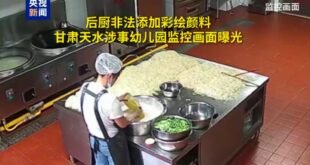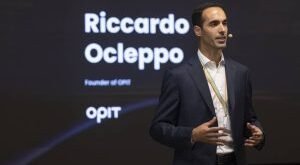The CEO of the Nigerian Railway Corporation (NRC), Dr. Kayode Opeifa, said that the Nigeria railway sector has achieved more significant progress in the last decade compared to the previous 60 years.
Opeifa recognized the prevalent public perception of the railway sector as a dormant, often characterized by frustration and stagnation.
However, he underlined that this vision has neglected the substantial unspoken potential of the sector, ready for revitalization and development.
The head of the NRC made these observations on Monday during an apparition in the Nigeria Nigeria news business, where he examined the activities of the company under the administration of President Bola Tinubu and the detailed projections for future sectoral growth.
Opeifa stressed that while the previous administration had already revived the railway sector, the current administration was based on that foundation and has expanded it significantly.
He said: “So, if we had continued to reach the same level of progress over the years, I think we should speak of about 30,000 kilometers of railway. Currently we have just under 4,000 kilometers of railway, between 1898 when the plan started and 1960 to independence; we did about 3,000 kilometers since then. From 1960 to 2000, the progress was minimal.
“A 25-year-old strategic plan was proposed, but nothing materialized until 2015, when we completed the Abuja-Kaduna railway line, the Warra-Itkpe railway line, and started the railway with standard Lagos-Ibadan indicator. These projects align with the vision of the OBAFEMI AWOLOWO head outlined in his book in 1970.
“For me, this narrative highlights the potential not exploited for national integration, economic development and social emancipation from poverty.
“In the last three years, our attention has been focused on the completion of ongoing projects, ensuring that the Nigerians benefit and using the railways as a milestone of economic growth to increase GDP and guide Nigeria towards prosperity.”
Opeifa explained that while the rolling is available, the system previously lacking layoffs, adding that the essential layoffs are now progressively implemented.
He said: “Even more important, attention is paid to the optimization of all infrastructure and the ability within the railway sector, in particular for freight transport, since this was the basis on which the NRC was established.
“Therefore, what this administration has done in the railway sector is to increase the ability without adding further infrastructures, optimizing what is on the ground and expands to ensure that the maritime sector of Nigeria, the freight sector, the transport sector and the logistical sector can exploit the standard -made indicator lines.
“This is the current goal. Now we have connected to the main terminals in the Apapa gate, allowing the freight movement on both standard gauge and Gauge lines of Gauge. For example, we can move freight transport from Apapa to our courtyard to Ebute Meta, to Idu, to Monys and Omi-ADio in Ibadan and to the bottom of Ilorin.
“Plans were underway to extend the services to Minna and then Kaduna by Sallah – we were actually in Kaduna about eight months ago – but the recent washes, which have been made public, hindered progress. These washing, caused by the eroding the tracks, were a recurring problem.
“On the other hand, there is the problem of railway connections with states. We have implemented a program of access to the tracks, allowing to optimize unexpected tracks.
“In addition, Borno State is making efforts in this sense and we are working on the Minna line in Kaduna, which will also come online. This will revitalize the narrow gauge lines, making them relevant to the present day.”
He also said: “The track access program has allowed the private sector companies to use the standard and narrow gauge lines to transport their load. Currently, you can see the load moving from Lagos to other destinations along the railway lines.
“There is a significant interest from the main logistical companies, which is also registered. For example, the pipes for the Akk project, shipped through the port of Warri, will be transported through the central line.”
The NRC boss said that at a global level, the transport sector, excluding the domestic sector, contributes with the highest amount of carbon emissions in the atmosphere.
He said: “When the president came into office in May 2023, exactly two years ago, he clarified that Nigeria would align with the 2060 carbon emission program and the subsidies would have been interrupted.
“With the removal of the subsidies, we would go to the cleanest energy, in particular to the compressed natural gas (methane).
“Before my recovery, the sector, the Ministry and the Nigerian railway company had already explored using methane or liquefied natural gas (GNL). They concluded that the GNL would be suitable and a proof of the concept has shown that retrospective engines to use 70% of GNL and 30% diesel could function effectively.
“A 30 -day 30 -day test has been conducted. While methane is also practicable, it requires multiple trolleys due to its compressed nature.
“At the time of the recovery, I discovered that diesel costs were a significant expense for our operations. Given the volatility of diesel prices, we decided to adopt the president’s initiative. By collaborating with the P-CNG project team, we established that the transition to the GNG could produce significant savings in diesel costs, energy expenses and operating expenses.
“The Memorandum of understanding (Mou) signed with them is a collaborative effort in line with the presidential directive on the integer collaboration.”
[Credit: PSN]
Stay forward with the latest updates!
Join the Conclaveng on WhatsApp and Telegram for notices of news in real time, rupture stories and exclusive content delivered directly to the phone. Don’t miss a title: Sign up now!
Join our WhatsApp channel
Join our Telegram channel
 JamzNG Latest News, Gist, Entertainment in Nigeria
JamzNG Latest News, Gist, Entertainment in Nigeria









